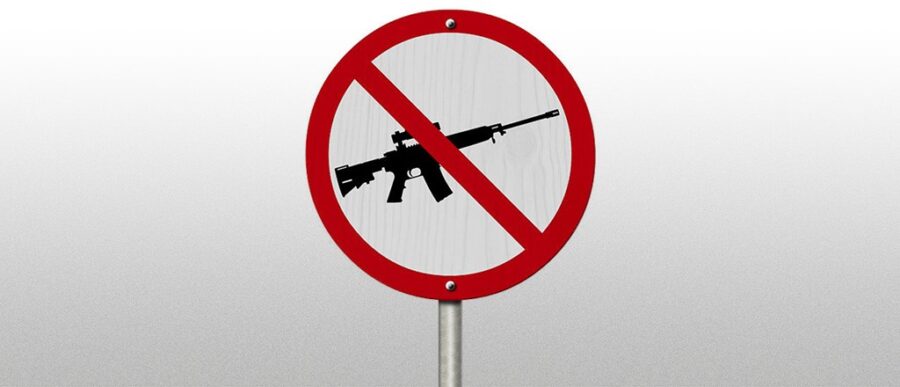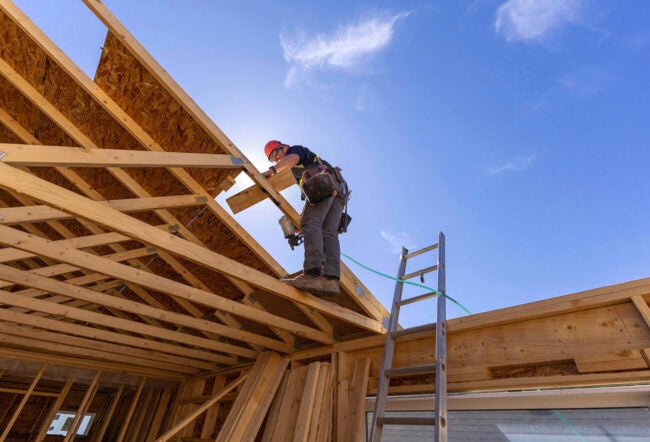The February shootings at Marjory Stoneman Douglas High School in Parkland, Fla., that killed 17 and wounded many more has drawn overwhelming support for gun control laws across the U.S., including from large U.S. corporations. Those calls grew after Tuesday’s shooting at YouTube’s headquarters in San Bruno, Calif., that left five injured and the shooter dead from a self-inflicted gun wound. As advocates of gun rights and gun control voice their respective arguments, one case in point is how Australia managed to enact strong legislation around guns after a 1996 incident in Port Arthur, Tasmania, that left 35 dead and 21 injured. An AR-15 semiautomatic rifle was used in both the Parkland and Australia attacks.
Australia’s gun control laws could offer lessons for the U.S., drawing upon the findings of a recent paper by Benjamin Ukert and Elena Andreyeva, post-doctoral researchers at the Leonard Davis Institute of Health Economics and the Penn Injury Science Center at the Perelman School of Medicine. They found a 60% drop in firearm mortalities between 1979 and 2013, the period they studied, with data from the Australian Bureau of Statistics.
Among the measures that helped in Australia were swiftness in passing gun control legislation soon after the 1996 shooting incident, a 28-day waiting period (which some Australian states have since relaxed), background checks, a compensation-backed buyback program including for illegal guns, and the apparent absence of a large black market, according to Ukert and Andreyeva. They acknowledge that conditions in the U.S. are different, but highlight Australia’s case as “a laboratory for democracy” in an interview on the Knowledge at Wharton show on SiriusXM channel 111. (Listen to the full podcast using the player at the top of this page.)
Following is an edited transcript of the conversation.
Knowledge at Wharton: The idea to look at gun control laws in Australia, in part, is obviously driven by what we saw in Florida. But from a historical perspective, take us into the data you looked at and the potential impact your research could have.
Benjamin Ukert: We’re looking at the national level [in Australia] at gun homicides, suicides and the overall total level of firearm-related mortalities between 1979 and 2013. Looking at the time trends, we’re trying to understand, in essence, what this law did to abruptly change the level and total count of firearm mortalities after the law was introduced.
There are some tricky parts to it [around] some statistical issues, but overall, it looks like there was a big drop in firearm mortality after the law was introduced in 1996. [The data is from] the Australian Statistical Department, where they collect data on homicides, mortality in general, total mortality and firearm mortality. They also collect some demographic and socioeconomic information on the population of Australia.
Elena Andreyeva: The law didn’t just concentrate on the long arms [such as] semi-automatic weapons. It also, through a buy-back program, encouraged people to sell all types of firearms they might have owned – not just long arms, but also handguns. It also significantly strengthened the requirements for owning a gun. You had to pass quite an extensive background check. You had to provide a reason – why would you want to own a gun? Self-protection (as a reason to own a gun) was actually specifically excluded. So you couldn’t say, “I want to protect my house, and that’s why I need a gun.”
“Very large effects have been seen in the firearm suicide rate, [although] the intended goal might have been much more on the homicide end.” –Benjamin Ukert
Knowledge at Wharton: When the idea of this law was being brought forth, there was widespread support in Australia for changing gun laws – correct?
Ukert: That is correct. Immediately after the attack, the government came together at the national level to think about the ways [in which] they could stop massacres across Australia. That happened within a reasonable time frame of within 30 to 60 days; they already had a rough plan outlining what they think they should pass. Even though there was broad consent, there was some opposition from some state governments and the legislature.
Knowledge at Wharton: What is the law in Australia now in terms of gun ownership?
Andreyeva: [First], all the long arms and semi-automatic weapons are banned completely. You can own certain handguns, but again, you have to provide a valid reason for owning them. You have to pass background checks. You have to show that you know how to securely store and operate your gun, and so on. [Second], manufacturing and import of long arms – semi-automatic weapons – [are not] allowed in Australia.
Ukert: Not only were there large regulations, but it was hard to obtain guns or semi-automatic weapons from other means [such as] on the black market, for example. The third component is the geographic location of Australia. There is no across-the-border smuggling to that degree. You have to ship them in, which might be much more costly for the group that wants to bring them into the country.
Knowledge at Wharton: How significant was the decline [in mortalities]?
Ukert: What we saw is roughly a 60% reduction in firearm-related mortality, in our recent study. Very large effects have been seen in the firearm suicide rate, [although] the intended goal might have been much more on the homicide end.
Andreyeva: Finally, Australia didn’t have any mass shootings since the introduction of the law.
Knowledge at Wharton: We have a divided views on gun legislation and the use of guns in the U.S. What do you think you can bring forward with this type of research?
Ukert: On the one hand, it’s important to think about what Australia actually enacted in terms of regulations. It wasn’t, for example, that they just banned the semi-automatics. It was a comprehensive view of the potential dangers of firearms.
An important part is to put this in the context of what is currently going on and is being discussed in the U.S., which is quite different from what Australia even proposed. We don’t know which of the three components that we mentioned earlier are the most effective to address firearm mortality.
More research is needed to identify the components that are the most important. Is it enough to just ban semi-automatics? Maybe the regulations played a really important part – for example, the 28-day waiting period. But overall, we at least know that if we enact all three components, there is a likelihood that you will see effects in terms of firearm mortality.
Andreyeva: It also depends on which firearm deaths can be affected by which parts of the law. When we saw the biggest drop in firearm suicides, one could tell a story that maybe that came from the 28-day waiting period. If I feel like committing suicide, and I go to the store to buy a gun, and I’m told that I have to wait 28 days before I can get it, I might change my mind. I could go to a different means or change my mind completely in those four weeks.
Knowledge at Wharton: A lot of the conversation in the U.S. has obviously been around guns but it has also been around mental health and what police can do in these situations. Somebody who’s thinking about taking their life may have been able to get help in that period of time.
“Australia is like a laboratory, an experiment for what happens when you pass national comprehensive gun reforms.” –Elena Andreyeva
Andreyeva: Right. I think that can be applied [also] to “crimes of passion,” as we would call them. It might not be a suicide, but it might be a fight with your friend or relative.
Knowledge at Wharton: What has been the impact on the homicide rate?
Ukert: We saw a slightly larger drop in firearm homicides of between 60% and 80%. That depends on a few things. On one hand, the [first] paper that we published shows a little bit [of a] smaller effect. On the other hand, our new paper shows a little bit of a larger effect. But overall, it’s promising that we see drops in homicides related to firearms, which was the intended goal.
The next question we’re tackling now is whether it has affected the total homicide rate, as well. For example, a big argument is always [that] if you don’t have a gun, you just use other means to do it. What we’ve seen there is that there is some evidence of reductions in the total homicide rate, as well, but just not as large.
Knowledge at Wharton: Ben, you’re from Germany, and Elena, you’re from Russia. I was reading an article where you both were commenting on how different the culture is here in the U.S. surrounding guns, compared to [that in] both of your homelands. How different is it?
Andreyeva: Well, in Russia it’s a little tricky, because there is a large black market for firearms. When it comes to legal ownership of firearms, it is quite restricted, so you do have to show genuine reason for owning a gun. You do have to pass background checks. There is a waiting period. So there are all those components that you have to go through before you get a gun.
So as a regular, everyday normal person in Russia, I would never have thought of owning a gun. I would never have thought that it is my right or my desire to own a gun, but there are definitely opportunities to bypass the laws in Russia.
Ukert: The biggest difference [in Germany] is that you don’t have this constitutional right to bear arms initially, so the overall atmosphere of when you grow up puts much less emphasis on guns in general. Most people who are hunters have guns. People in sports clubs or firearm clubs have guns.
But what I have noticed is that if you have a gun, everybody knows that this is a dangerous tool. And you don’t want to have this lying around anywhere. So regulations again are quite [stringent], in terms of how to store them. For example, you have to store them mostly in a safe if you have the gun at home. And you’re not supposed to, for example, have the ammunition with the gun in the same place. So if somebody gets to your gun, they can’t just use it on you or whatever is going on at that time.
Knowledge at Wharton: With this part of the research, have you started to hear from people about it and about the data that you’re bringing forward? I would think this would be research that would draw the attention of a lot of people as it gets out even more.
Ukert: It does a little bit. I think it’s still complicated [in one respect]. Most just researchers who are interested in this topic like to have a good comparison group when they do this. And the problem with Australia was that it was a national law that impacted everyone at the same time. So the big debate has been: Who do you compare this to? There are no good comparison groups in terms of other countries.
So there’s always been this debate of if we don’t know how to compare it, it’s really very hard to understand what the effect actually is. There have been attempts to do this, but they mostly focus actually on Australia, which we do, too. Hopefully more researchers will come forward to see what we have proposed and done and maybe think of new ways to verify the results that we found.
Andreyeva: Australia is quite a special case, because just based on the geographic location and the way it is isolated from other countries, I think the gun regulations there had a better opportunity to succeed than they might in countries that are not isolated from other countries. It’s hard to bring the same lessons to, for example, in the case of the U.S., since the U.S. is not like Australia in a lot of respects.
Knowledge at Wharton: Yes, and you have the constitutional right [in the U.S. to own guns]. Then you also have what a lot of people would freely admit, the potential for a large black market. In terms of doing the research, how do you factor in the potential use of a black market? Or can you?
“When we saw the biggest drop in firearm suicides, one could tell a story that maybe that came from the 28-day waiting period.” –Elena Andreyeva
Ukert: It’s really hard to do. In our case, we can’t really factor it in directly. On the one hand, we rely on evidence from Australian researchers who document the existence or non-existence of a black market in Australia. What we’ve read from those people is that in most cases, there was a relatively small black market to begin with, before the law passed.
And given the immediate nature of the law, it was really hard for a black market to develop in such a short time frame, especially because you have to think about a lot of logistical constraints. For example, where would they now import guns from? All these different aspects they never had to think about, because they could just operate within Australia before.
Andreyeva: Also, [it helped] that Australia had a buy-back program for the guns, where they reimbursed people not only for new, illegal guns, but also people could sell their legal guns if they wanted to. That helped preventing the formation of the black market because you didn’t just have to surrender your gun. You were at least compensated for that.
Knowledge at Wharton: I would think in terms of that one event [in Tasmania] being a changing point in 1996, they are incredibly wary of keeping an eye on the data, just to see the impact of this law.
Andreyeva: Australia is almost [like] “laboratories of democracy.” When it comes to modern gun regulation, Australia is like a laboratory, an experiment for what happens when you pass national comprehensive gun reforms. I think in that respect, Australia understands the importance of their law for the rest of the world.
Knowledge at Wharton: Where does the research take you next? You’re working on a paper currently, correct?
Ukert: That is correct. We had to collect more data than what we used in the other study, where we dig down to understanding at the state level how and where the firearm mortalities are occurring. How would the effect of this law relate, for example, to the level of firearm mortality within each of the Australian states?
Knowledge at Wharton: And that involves probably dealing with a variety of social issues … in terms of the demographics of the people, such as age and income of the people [across states].
Ukert: Correct. We collect all that information, again, from the Australian Bureau of Statistics, trying to get as much information as we can in terms of changes in demographics across time. For example, [you might see] a drop in firearm mortality just because the population is aging.
Knowledge at Wharton: We talk a lot on this show about the difference between the baby boomer generation and the millennial generation. There’s probably an element of that in the data in Australia between age groups that are 30 years [apart].
Andreyeva: Exactly. In Australia, if you look at the long-term trend of firearm mortality, you could actually see that there were some signs of decline, even before the 1996 law.
The important thing now is to identify the facts of the law itself outside of the general decrease in the firearm mortality that has been happening in Australia, even before 1996. That’s the objective now: Can we isolate the effect of the law on the mortality, as opposed to just general decreases in the trend?



